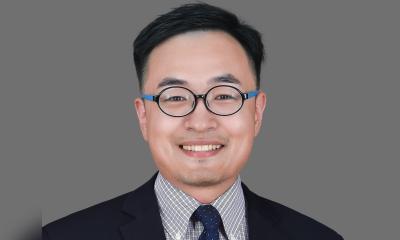Image source: Unsplash/Syed Ali Aqdas
News • Study uncovers mechanisms
Predicting susceptibility to cancer-causing agents in the environment
New insights into the mechanisms behind how cancer-causing agents in the environment activate genetic recombination in DNA could help to explain some of the effects of exposure as well as predicting which individuals may be more susceptible to developing the disease, a new UK study has suggested.
The paper was now published in Nature Communications.
Everyone is exposed to low levels of carcinogens (substances or radiation that promote the formation of cancer) in the environment. One of the most widely found is benzopyrene - a general chemical pollutant found in smoke from stoves such as wood burners, exhaust fumes and barbequed meat and fish. One active ingredient of benzopyrene, BPDE, directly damages the DNA sequence forming what is known as adducts which in turn promote cancer-causing mutations.
While models exist showing how BPDE causes these mutations, some of the pathways are still not understood. It is currently believed that a BPDE adducts cause mutations during DNA synthesis because they activate a process called translesion synthesis - where cells copy the DNA despite the presence of unrepaired damage to allow progression of the replication fork – and this induces mutations. However, evidence also suggests the involvement of another process called homologous recombination (HR) which works by copying other undamaged parts of the genome. HR proteins repair complex DNA damage such as breaks in the DNA strands and interstrand cross-links, and protect and recover stalled or broken replication forks.

Image source: National Cancer Institute (NCI)/Winship Cancer Institute of Emory University
This latest study treated human cell lines with BPDE before using molecular biology methods, such as microscopy, to characterise the homologous recombination pathway in detail. Results have offered new insights showing that HR proceeds by an unusual mechanism at BPDE adducts and the process can be activated even when there are no stalled or collapsed replication forks. Instead, it is activated at single-stranded gaps in the DNA that are generated by the re-priming activity of PrimPol - a protein encoded by the PRIMPOL gene in humans.
The findings also address longstanding questions by showing that at bulky DNA adducts, the exchanges between the sister chromatids (the identical copies formed by the DNA replication of a chromosome), products of HR that have been traditionally connected with replication fork collapse and DSB repair, are associated with the repair of post-replicative gaps. Furthermore, these post-replicative gaps are produced by PrimPol, shedding light on the function of PrimPol during DNA damage tolerance.
Corresponding author Dr Eva Petermann from the University of Birmingham’s Institute of Cancer and Genomic Sciences, says: “Our study has revealed new insights into the effects of benzopyrene exposure in cells, which is important for understanding environmental causes of cancer and cancer development in general. Understanding this mechanism could help to better predict and detect negative effects of pollution as well as allowing for better interpretation of cancer genomics. For example, genetic variants in the HR genes BRCA2 and RAD52 have been liked to lung cancer susceptibility meaning that understanding how HR helps cell deal with benzopyrene could help us to predict individuals who may be more susceptible to the disease. Moving forwards it will be important to investigate the impact of such genetic variants on HR at ssDNA gaps. A PRIMPOL variant has also been suggested to play a potential role in cancer. It could also help predict which individuals will be more sensitive to carcinogen exposure.”
Source: University of Birmingham
18.11.2020










